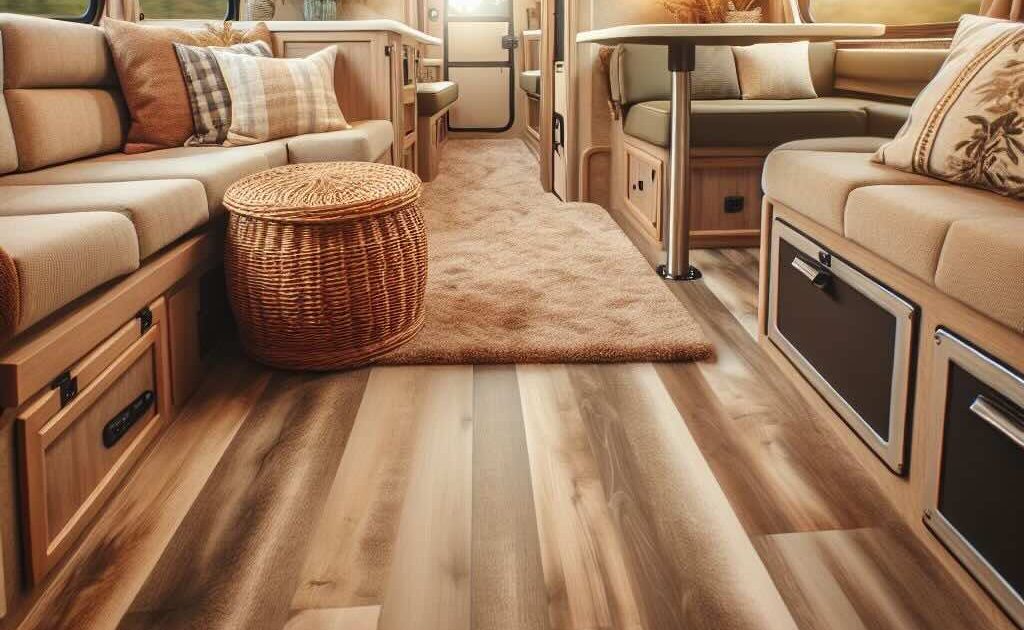A soft spot in your RV floor can feel like a sinking ship under your feet — and it’s not something you want to ignore.
Soft RV floors usually mean water damage or rot, and if left untreated, they can spread fast and lead to expensive repairs.
At Custom-Way, we’ll walk you through how to fix a soft RV floor yourself and get your rig safe and strong again.
Why RV Floors Become Soft
RV floors are built differently than house floors.
Most RVs use plywood, foam insulation, and thin vinyl or carpet layers. Over time, they weaken because of:
-
Water leaks (from windows, roofs, plumbing, or slides).
-
Moisture trapped under the floor.
-
Heavy traffic on aging materials.
If you feel a squishy, sagging, or spongy area when walking around, it’s a red flag.
How to Fix a Soft RV Floor
⚙️ Materials you’ll need:
-
Plywood (marine-grade is best)
-
Construction adhesive (heavy-duty)
-
Screws or staples
-
Crowbar or oscillating tool
-
Circular saw
-
Drill
-
Wood hardener (optional for minor repairs)
-
Floor covering (new vinyl, carpet, or laminate)
Step 1: Find and Stop the Leak
Before fixing the floor, you must find and fix the cause of the damage.
Check:
-
Roof seams and vents
-
Plumbing underneath sinks or showers
-
Slide-out seals
-
Windows and door frames
Seal leaks with proper RV caulk or replace cracked seals if needed.
If you don’t stop the leak, the new floor will rot too.
Step 2: Remove the Damaged Flooring
-
Pull back carpet, vinyl, or laminate over the soft area.
-
Use a crowbar, screwdriver, or oscillating tool to remove the rotted subfloor.
-
Cut back to where the wood feels solid and dry.
👉 Tip:
If only the top layer is damaged, you might be able to overlay it.
But full rot needs full removal for a long-lasting fix.
Step 3: Treat Minor Softness (Optional)
If the damage is light (not completely rotted), you can apply wood hardener.
It soaks into the plywood and stiffens it again.
However, for major softness or full sagging — replace the floor section.
Step 4: Replace the Subfloor
-
Measure the hole you created.
-
Cut new plywood to match.
-
Test fit it carefully — it should sit snug and level with the surrounding floor.
-
Apply construction adhesive underneath.
-
Screw or staple the new plywood securely to the frame underneath.
Step 5: Install New Flooring
Once the subfloor is strong again:
-
Reinstall old flooring if it’s salvageable.
-
Or upgrade with vinyl planks, RV carpet, or laminate.
-
Seal edges well if you install in areas prone to water (like bathrooms).
How Much Does It Cost to Fix a Soft RV Floor?
✅ DIY Repair: Around $100–$400 for supplies (cheaper if you already have tools).
✅ Professional Repair: Could cost $1,000–$3,000+, depending on how bad the damage is.
DIY saves a lot if you’re willing to put in the labor!
FAQ: Soft RV Floor Repair
❓ Can I just put new flooring over a soft RV floor?
No.
You must fix the soft spot first — covering it will only hide the problem temporarily, and it will get worse.
❓ How can I tell if my RV floor has water damage?
Signs include:
-
Squishy feeling underfoot
-
Cracks in vinyl or laminate
-
Musty smell inside the RV
-
Visible stains or discoloration on the floor
❓ Is marine-grade plywood necessary for RV floor repair?
Not mandatory, but highly recommended!
It’s more resistant to moisture and much more durable than standard plywood.
Don’t Wait to Fix a Soft RV Floor
Soft spots don’t fix themselves — and every day you wait, the damage can spread wider and deeper.
But with some basic tools, a few sheets of plywood, and a bit of elbow grease, you can repair your RV floor and make it feel strong and solid again.
At Custom-Way, we believe keeping your RV in good shape is part of the adventure — and tackling repairs yourself saves money for more travel memories!

